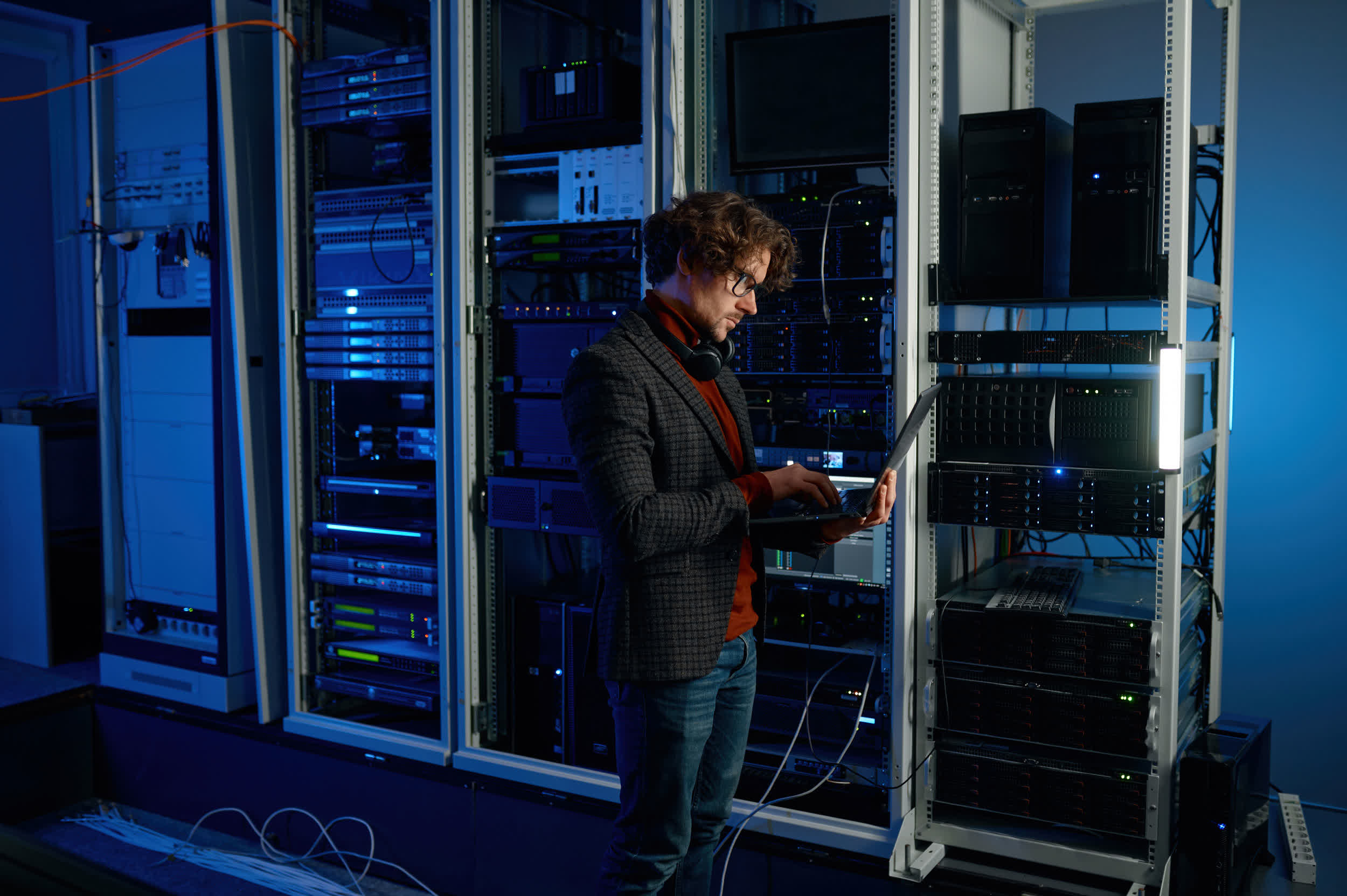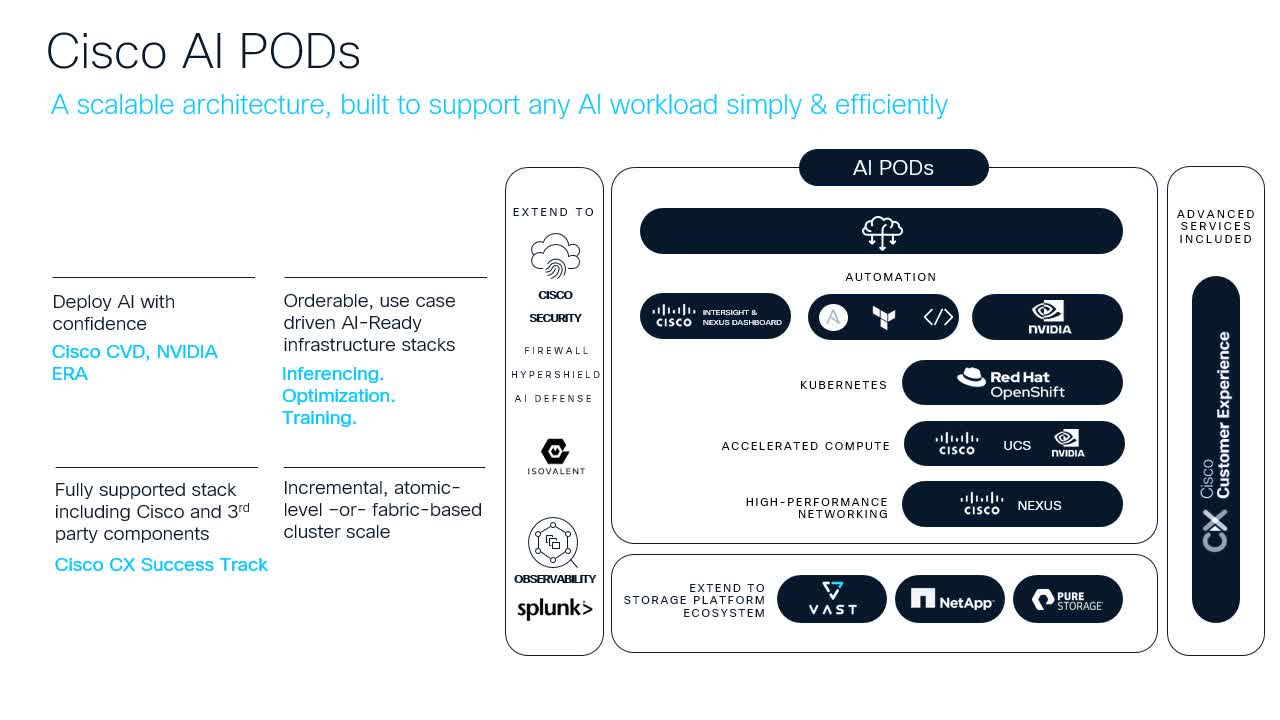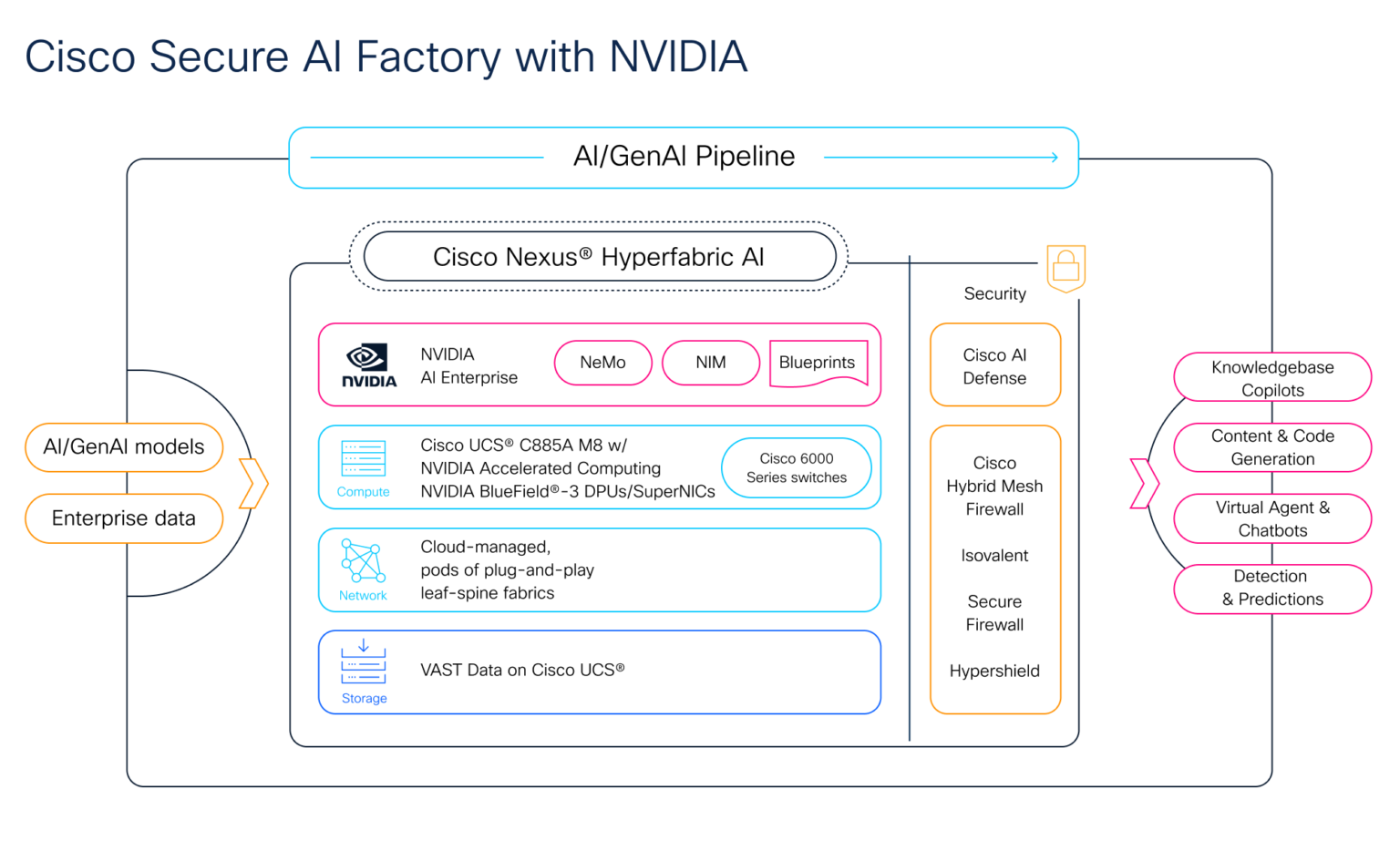Bottom line: At this year's Cisco Live event in San Diego, one thing became apparent: the opportunity to run modern applications like GenAI and autonomous agents is no longer limited to the cloud. Cisco was ready to highlight several new products and services specifically targeted at major cloud computing providers and large ISPs. They also noted that interest in expanding the capabilities of on-premises data centers is not only still alive, but it's being reinvigorated by the rapid transition to AI-powered workloads.
From new AI-optimized, on-premises-focused routers and switches delivered through the company's traditional networking hardware business, to AI-enhanced versions of their communications, collaboration, and customer support software platforms, and even into their new agentic AI offerings, Cisco made it clear at this year's Live event that it is eager and willing to meet the growing demand for capabilities that businesses can run within their own environments.
... it's a stunning development, given the relentless focus on moving everything to the cloud that the IT industry has witnessed over the past 10 to 15 years.
In some ways, it's a stunning development, given the relentless focus on moving everything to the cloud that the IT industry has witnessed over the past 10 to 15 years. And a cynic might argue it's an attempt by an old-school tech company to return to its glory days of providing essential enterprise equipment. But in truth, it's part of a much broader industry movement that many large companies are starting to see and talk about.
Driven in part by traditional data gravity arguments – which say you need to bring the workloads to the data – the fact that the most valuable corporate data (and the most useful for AI model fine-tuning) often still sits behind the firewall is a key factor. Combine that with the growing range of hardware and software offerings now capable of running these advanced workloads in the enterprise, and it all starts to make sense.
While companies will unquestionably continue to use cloud computing resources for some of their workloads, the interest in – and ability to do – more internally is very real. To put it succinctly: the world of Hybrid AI, where companies use both public and private clouds and data centers for AI workloads, has arrived.
Viewed through that Hybrid AI lens, many of the specific announcements from Cisco Live gain important relevance. For example, in hardware, new additions to the C9000 series switches and 8000 series routers leverage the latest Cisco Silicon One chips to run latency-sensitive AI workloads, while also integrating support for post-quantum security, zero-trust networking, and other capabilities.
The 8000 series routers also incorporate an enhanced version of Cisco's SASE (Secure Access Service Edge), SD-WAN (Software-Defined Wide Area Network), and next-generation firewall (NGFW) functionality.
Cisco AI PODs
In computing, Cisco launched its version of Nvidia's Blackwell RTX Pro 6000 GPU server (or, as Cisco calls them, AI Pods), specifically designed for companies to run within their own data centers.
Additionally, Cisco built on its partnership with Nvidia to showcase interoperable networking hardware that offers Nvidia's Spectrum-X capabilities, but uses Cisco's Silicon One chips and connects with Cisco G200 switches. The bottom line: it is now much easier for companies with existing Cisco-based networks to connect with these new AI computing resources.
On the software side, Cisco announced that many previously cloud-only AI-powered features in Webex – such as blurred backgrounds, audio denoise, and meeting summarization – are now coming to companies that still want to run Webex on-premises. By itself, this isn't a huge announcement, but it clearly signals Cisco's priorities and direction.
Similarly, for call center tools, Cisco debuted the Webex AI Agent, which allows pre-built templates for customer service interactions to be created much more easily. The new Cisco AI Assistant can also provide call center employees with real-time transcriptions that compensate for fast talkers, those with accents, and – most importantly – conversations across different languages. In addition, the Assistant can suggest responses, which can be tremendously helpful for customer service agents with limited experience.
As expected, Cisco also announced several AI and agentic-based capabilities, including its own customized, network-focused LLM, called Deep Network Model. It is trained on Cisco's own documentation, as well as decades of real-world data on how to interpret and resolve network-based issues. Cisco is using this model to power several important new capabilities, most notably AgenticOps and the AI Canvas.
Cisco Secure AI Factory with Nvidia - vertically integrated option
AgenticOps is Cisco's new tool for helping manage what is expected to be a deluge of new AI-powered agents traversing its networks. The goal is to provide a platform that can automate and operate agents at machine-level speeds and deliver real-time telemetry, while still allowing human IT teams to remain in control. The AI Canvas takes data from the AgenticOps tool and enables organizations to create dashboards and other visual indicators of key network, application, and agent activities.
The Deep Network Model is also being used to power the previously mentioned network-focused chatbot, the Cisco AI Assistant. It offers a valuable way for IT employees and network administrators to get quick, accurate answers to common issues they face in their day-to-day work. Importantly, all of these agentic capabilities are being made available for both cloud-based and on-premises implementations, with feature and functionality parity across both.
Another key area Cisco discussed in depth at Live was creating even more secure networks – again, on-premises. Noting that AI-powered tools also give bad actors new opportunities to launch dangerous cyberattacks, the company introduced important new additions to its zero-trust and firewall offerings to help mitigate these risks.
Specifically, Cisco unveiled a new Hybrid Mesh Firewall, as well as a Zero Trust Network Access (ZTNA) strategy that brings security protections deeper into the network and across a more distributed set of hardware (including that of some competitors), while also simplifying the configuration and management of these tools. One particularly relevant feature is that ZTNA capabilities are being extended to digital agents, helping ensure they are constantly monitored.
Of course, Cisco made a huge range of other announcements as well, particularly around further integrations between its ThousandEyes monitoring and Splunk automation tools. The new single Ethernet-cable-connected PTZ (pan-tilt-zoom) camera is also a great extension of the company's collaboration offerings.
Taken together, all the news from Cisco Live points to a vision of a company focused not only on bringing advanced AI capabilities to cloud-based offerings, but to on-premises installations as well. Cisco clearly sees a shift in focus among many businesses worldwide, and they are eager to provide solutions that meet those evolving needs.
Bob O'Donnell is the founder and chief analyst of TECHnalysis Research, LLC a technology consulting firm that provides strategic consulting and market research services to the technology industry and professional financial community. You can follow him on X @bobodtech


